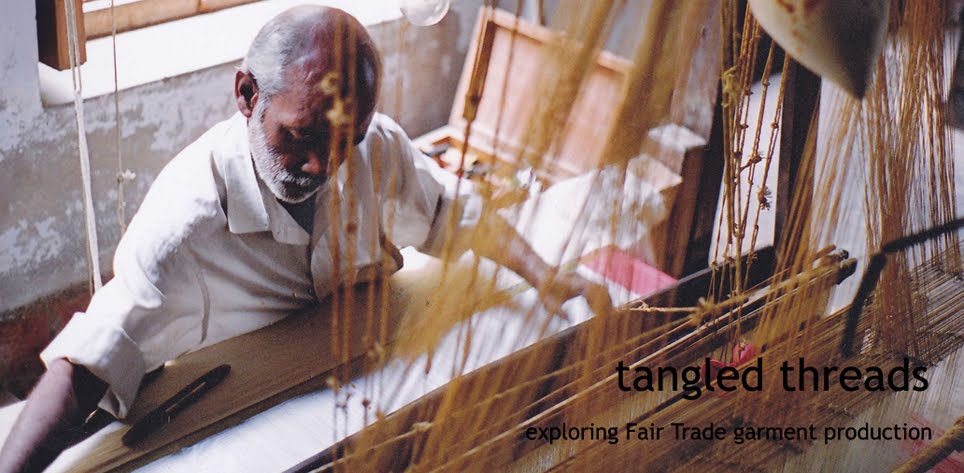

15th July 2010
This morning at approximately 8.30 when it was already an oven temperature, I seriously regretted deciding to go to the factory. It took over 2 hours to get to Teknagpara by auto. I turned up late and dusty and there is no use trying to describe my hair. Roger was there to meet me though, and I was soon whisked to the 9th floor and served tander pani (cold water) and my spirits were slowly revived. We spoke for a little while about Bangladesh and what it is like living here as an ex-pat, no social life to speak of, and constant power cuts. The factory employs over 3200 people. It solely makes knitwear, last year they made almost 2 million garments for a major UK retailer – they are hoping to expand this to 5 million this year.
Roger took me for a tour around the factory floor by floor. It is relatively cool and no one seems to be sweating. In fact I couldn’t find anything to critisise. There was enough space, there was good lighting, no one looked miserable (more than can be said for any British work place). But it did lead me to wonder if this was a front for the Bangladeshi garment factories that we have become used to hearing about in newspapers. I asked Roger, he seemed genuinely shocked that I would think that (and I suppose to have the balls to ask…) He says that the factories that operate with workers forced into these unpleasant conditions do not last for very long. The workers can generally find better work elsewhere or the factories fold due to poor management and not being able to hold onto the staff.
The workers in this factory get paid a piece rate, so depending on the difficulty of the garment they are working on they will be paid accordingly. The machine operators are the highest paid on the factory floor and they will be paid between 6,000 taka per month for an average operator, up to 9,000 taka for an outstanding operator. This sounds too good to be true, but I can’t really push the subject.
This factory also offers free lunch, English lessons and a health service.
So I left with an offer to go to the ex-pat club, apparently beers are only 150 taka, and a feeling of confusion. What is real? Is it possible for two such different factory models to operate within the same city – even the same street? Is Roger telling the truth? I am sure that the factory I visited is real, but is there another based around the corner with appalling conditions? I pondered this as I sped and bumped my way back to Dhaka.
Tonight, we are heading to the Chittagong hill tracts where we will be meeting some of the producers who work with Folk Bangladesh, another group that supply People Tree. These areas are restricted and we had to apply for permits, a big reason why we have been in Dhaka for so long.

Hi Kate, fantastic to read your exploits so far. Looking forward to reading more now that I have caught up with things. Cheers, Cathy
ReplyDelete